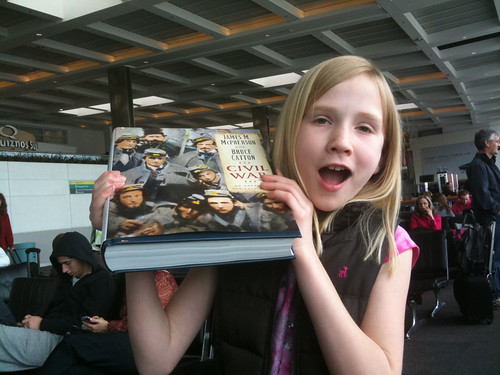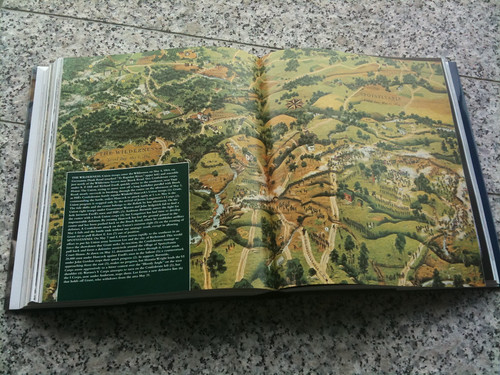It is imperative we galvanize the administrative and political support to empower our students with wireless, digital learning devices as soon as possible. The availability and explosive growth of high quality digital curriculum materials should make this need plain to most adults, but in many cases it hasn’t yet. “Digital refugees” view the Internet as a chaotic, lawless arena better feared than understood. While the digital learning frontier can certainly be fraught with perils and dangers, it also is replete with a bounty of phenomenal learning materials which rival analog twins in multiple dimensions. Even in our current season of financial hardship for schools, learners have an enduring need for high quality curriculum materials. By empowering students with wireless, digital learning devices as well as relatively open, high speed Internet connectivity, students can access this wealth of digital curriculum and use it in creative, constructive ways as well as consumptively.
Let’s consider one easy dimension on which digital curriculum “wins” over analog cousins: WEIGHT. Today my 9 year old and I are traveling from Oklahoma to New Hampshire and Maine for a series of presentations and workshops for educators. In the Baltimore airport, I couldn’t pass up a chance to purchase “The Civil War” By Bruce Catton, James M. McPherson, and Noah Andre Trudeau. Republished in 2009, this 630 page tome is filled with photographs, maps, artist drawings, and a compelling narrative about the most divisive war ever fought in the United States. On clearance for $20 US, this was a steal.
This book is HEAVY. I don’t know exactly how many pounds it weights, but it is FAR more than any student is going to want to haul around to and from class each day.
Interestingly, when another traveler in the airport saw Sarah posing for this photo and me taking it, he immediately asked:
Are you saying she needs an iPad for school?
My response was maybe not an iPad, but at least a netbook! Without any prompting, he immediately saw the point of this photo dramatization: It’s ridiculous to expect students to have access to the content in a book this heavy on a regular basis. It’s simply too HEAVY. If this text was available digitally, however, it would not increase the weight of a student’s digital access device one iota.
The illustrations and other static media elements in this book are superb. I’m energized to learn more about the Civil War because I read “Guerrilla Season” by Pat Hughes last week entroute to and from south Florida, thanks to Eric Langhorst. I’m eager to dive into Catton, McPherson and Trudeau’s masterful work on the Civil War.
Of course, what I’m NOT looking forward to is hauling this book around the next six days as we travel around New England. That inconvenience will be outweighed (literally) by the benefit of owning this book and being able to read it in upcoming weeks and months. Still, I regret it’s not available digitally. Not only would that make it a cinch to carry on my laptop (or the iPad I hope to purchase someday) it would also make it infinitely more ACCESSIBLE to me at my point of need or desire. Want to read more about the Civil War from leading experts on the subject? Sure, I have it right here on my phone. Or on my laptop. Or on my iPad. Whatever my device, I could have it with me. That’s digital relevance, and it’s a BIG reason “bits” beat “atoms,” to use the parlance of Nicholas Negroponte in “Being Digital.”
There are other reasons digital curriculum beats analog curriculum, of course. Another is COST. I was thrilled to find this $50 book for $20 today in an airport clearance sale, but if the book was digital it could sell for even LESS. If it was digital, I could readily reuse digital elements of the book under fair use guidelines of US copyright law to REMIX ideas and lessons into my own, original creations about the Civil War. I could go on…..
When you think of digital curriculum the next few days, think of 9 year old Sarah holding this weighty book about the Civil War. Doesn’t she, and all the other learners inside and outside our schools, deserve digital access to the best ideas in the world for learning? Of course she does and all our learners do. We need to provide that digital access, and it all begins with digital learning devices. Thankfully, we have more midwestern schools going down the path of 1:1 learning. In time, all will follow suit.
View 1:1 K-12 Schools in a larger map
If your school is 1:1 or going 1:1 in 2010-2011, please let us know about it by completing this Google Form. (“We” at this point means the board of Storychasers and staff of CASTLE.)
Technorati Tags:
1to1, education, history, laptop, learning, technology, digital, curriculum, textbook, reading, civil, war, civilwar, 1:1




Comments
4 responses to “An easy case for digital curriculum: Weight”
Besides the weight factor, two things occurred to me when I read this and thought about having that book available to students in digital form rather than in hard copy.
First, digital text is searchable, making it a more useful resource.
Second, and perhaps more interesting, is that in a printed text, images are static and presented in the form the designer decided was best. In a digital text, though, the reader has the opportunity to zoom into high resolution pictures, pan around, focus on small details, and even tag different details and features they notice.
Excellent points all. This is worth sharing with everyone…
Sometimes having the maps at hand to flip back to is worth having an old-fashioned paper book. 🙂
Hello, This is Tim Mai from EDF 315 at the University of South Alabama. I just wanted to say that I can totally relate the the print material vs digital materials. Being a college student we are required to buy text books for our classes. We ended up paying 500 bucks or more per semester for a some books. The sad thing is that that we rarely actually use these textbooks. Sometimes I feel cheated and wish they would change this. I actually get better sources look for information on the internet than actually using the text book.